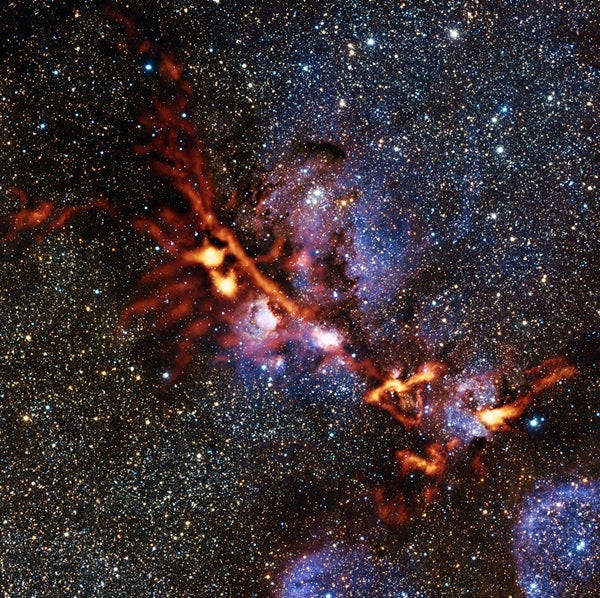ArTeMiS is a new wide-field submillimeter-wavelength camera that will be a major addition to APEX’s suite of instruments and further increase the depth and detail that can be observed. The new-generation detector array of ArTeMiS acts more like a CCD camera than the previous generation of detectors. This will let wide-field maps of the sky be made faster and with many more pixels.
The commissioning team that installed ArTeMiS had to battle against extreme weather conditions to complete the task. Very heavy snow on the Chajnantor Plateau had almost buried the APEX control building. With help from staff at the ALMA Operations Support Facility and APEX, the team transported the ArTeMiS boxes to the telescope via a makeshift road, avoiding the snowdrifts, and was able to install the instrument, maneuver the cryostat into position, and attach it in its final location.
To test the instrument, the team then had to wait for dry weather as the submillimeter wavelengths of light that ArTeMiS observes are strongly absorbed by water vapor in Earth’s atmosphere. But, when the time came, successful test observations were made. Following the tests and commissioning observations, ArTeMiS has already been used for several scientific projects. One of these targets was the star formation region NGC 6334 in the southern constellation Scorpius the Scorpion. This new ArTeMiS image is significantly better than earlier APEX images of the same region.
The testing of ArTeMiS has been completed and the camera will now be returned to Saclay in France in order to install additional detectors in the instrument. The whole team is already very excited by the results from these initial observations, which are a wonderful reward for many years of hard work and could not have been achieved without the help and support of the APEX staff.










